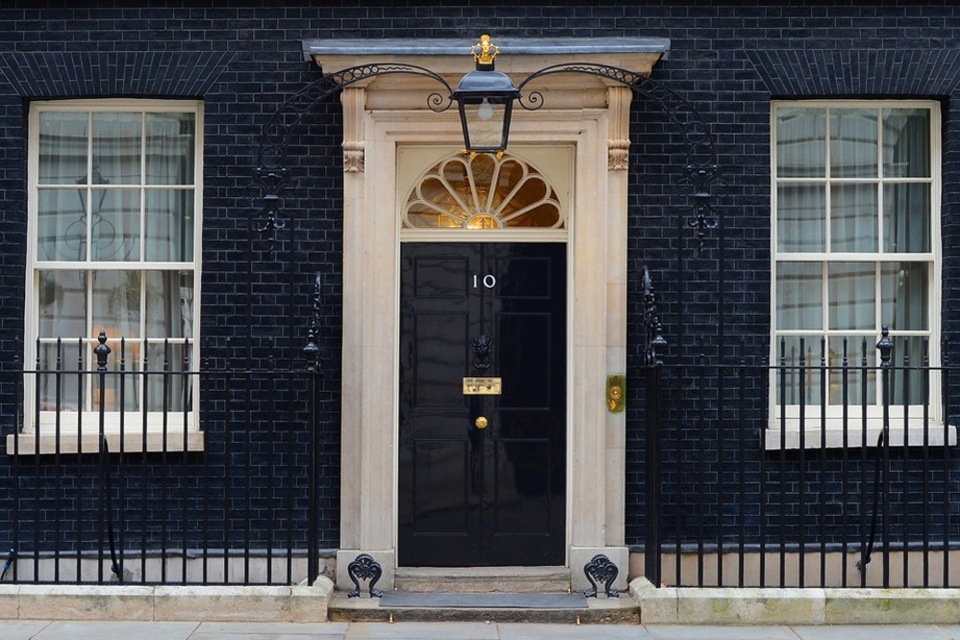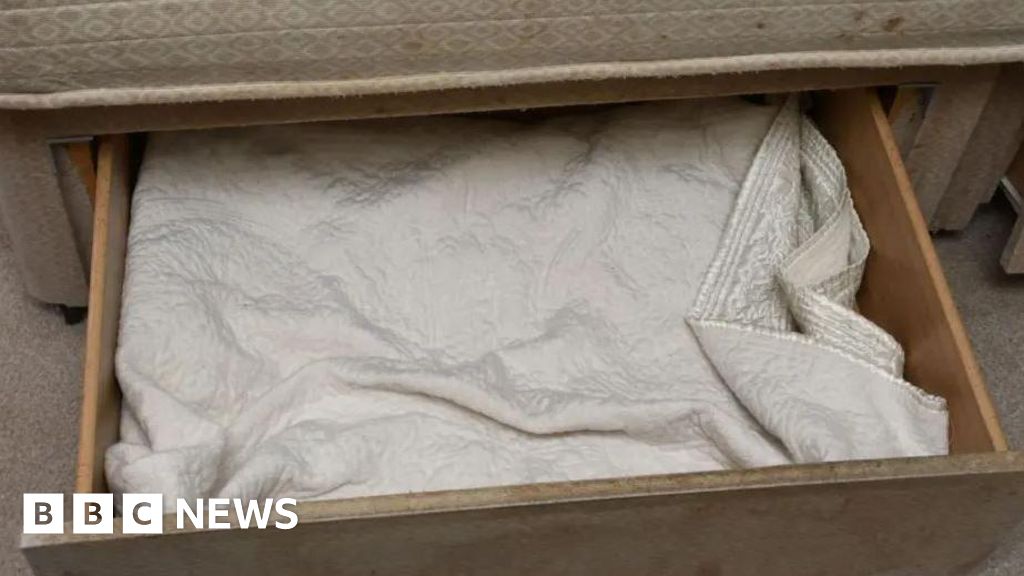A downsizing pensioner couple who strayed 16 inches “too close” to their neighbours’ garden when building their new house have been left facing a £200,000-plus court bill.
Pensioners Samuel and Kathleen Horton sold their £815,000 three-bed Essex house in 2020 after first converting their detached garage next door into a smaller two-bed home for them to move into.
But they ended up being dragged to court after being told by local planners that part of a retaining wall they had built was 40cm – 16 inches – too close to the garden of their neighbours, Jonathan and Carolyn Orchard.
The Hortons then claimed that the garden fence was not on the true boundary, with a fight over where it lies first going to Chelmsford County Court and then three times before High Court judges.
Having lost every time, they have already been ordered to pay the Orchards’ costs of the trial, estimated at £145,000, plus costs of further applications in the case and another £35,000 in damages, totalling well over £200,000 – on top of their own substantial lawyers’ bills.
And after being told of the crushing costs of the case to the couple – who are on state pensions – a High Court judge implored them to give up their fight.
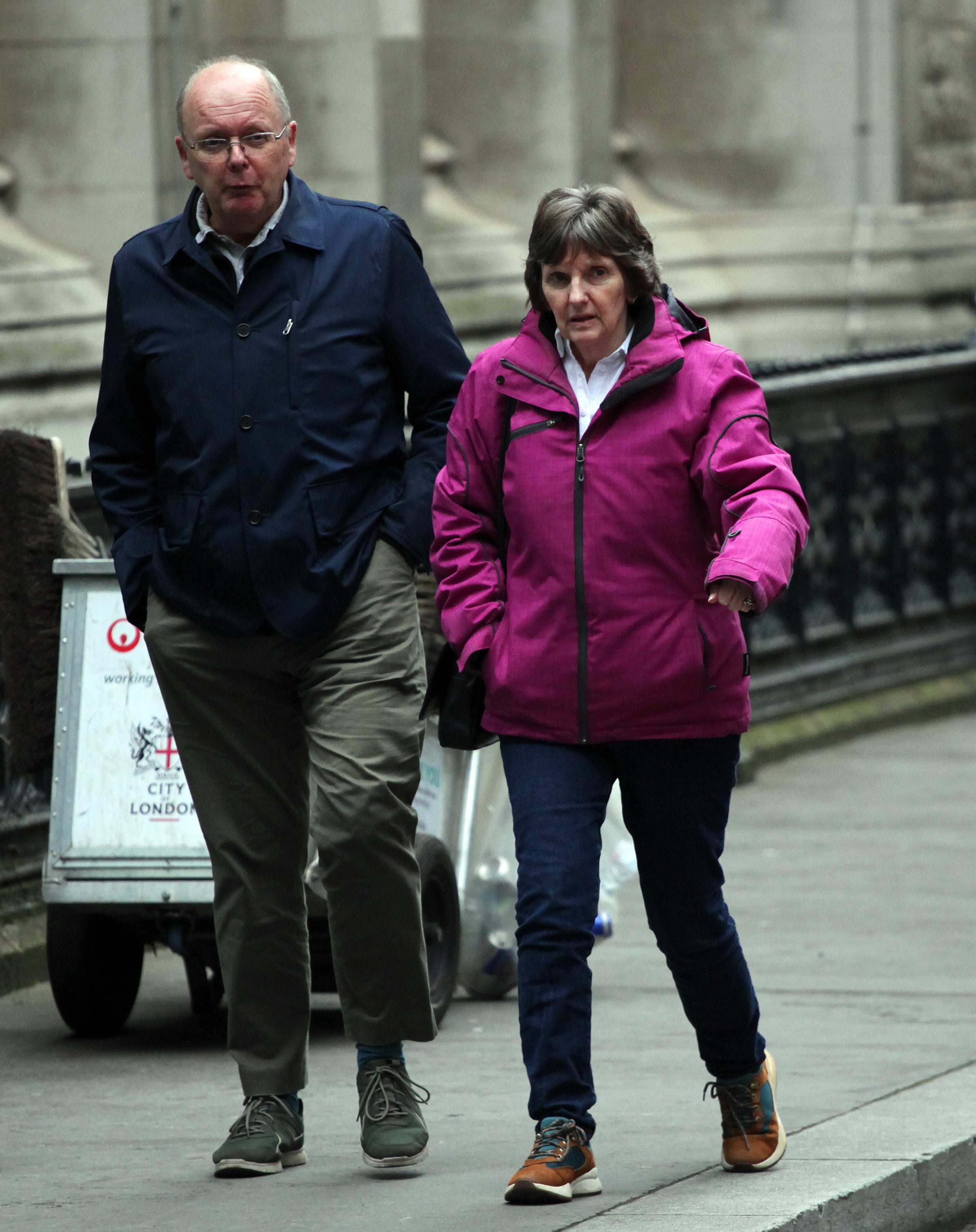
Dismissing their latest application to appeal, Mr Justice Miles said: “They must face up to the fact that the boundary is where the judge has ordered. There must be an end to litigation.”
In a 2023 ruling setting the line of the boundary at Chelmsford County Court, Judge Robert Duddridge said semi-retired insurance consultant Mr Orchard, 65, and his wife, 63, had been at their home in Downham Road, Downham, near Billericay, since 1999.
Neighbours Samuel and Kathleen Horton moved in next door in 2005, then built their new house on the site of their detached garage in 2019, before selling their previous home the following year.
The judge said the new building project had been controversial, with multiple complaints of trespass onto the Orchards’ land being lodged with planners at Chelmsford County Council.
“In an email dated 10 July 2020, Chelmsford informed Mr and Mrs Orchard that the defendants had built a retaining wall to the rear of 111A 40cm too close to the boundary and the enforcement team had requested the defendants to carry out remedial works to secure compliance within two months,” he said.
That led to the Hortons obtaining a surveyor’s report, which stated that the fence separating the two gardens was in fact on their land, and therefore their retaining wall was not too close to the boundary.
With parts of the fence removed to allow access for work, surveyors for the Hortons then placed wooden stakes in the ground on the Orchards’ side, where they said the actual boundary lay.
The Orchards countered by claiming that the stakes had been placed on their side of the true boundary and inside their garden at number 113.
“The Orchards’ pleaded case is that the defendants positioned these wooden pegs – or arranged for them to be positioned – in order to claim compliance with the terms of their planning permission, in response to Chelmsford’s proposed enforcement action,” said the judge.
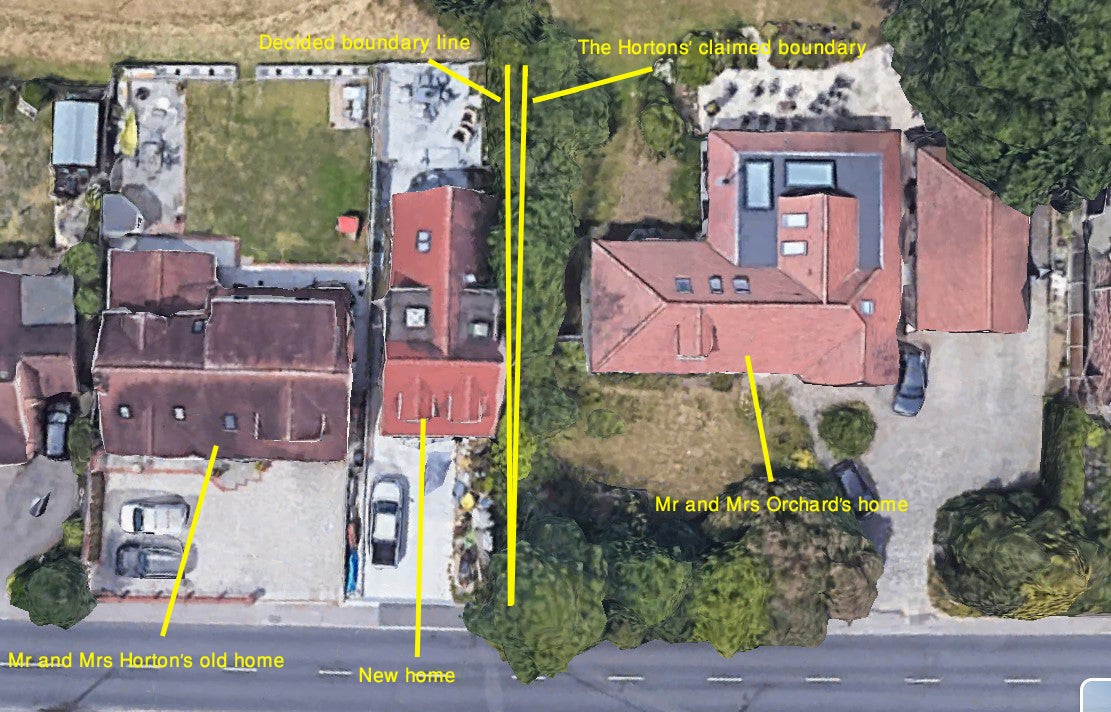
The Orchards then began the court case, initially claiming an injunction to stop the work, but eventually going to court for a ruling on where the boundary between the properties lay.
Ruling on the case in July 2023, Judge Duddridge found that expert evidence called by the Orchards was right and that the true boundary was to the west of the line claimed by the Hortons.
“Given the history and the way in which the dispute about the location of the boundary arose, I think it is more likely than not that it was Chelmsford’s threat to enforce the planning conditions relating to the proximity of the defendants’ structures to the boundary that prompted them to obtain the survey, which then enabled them to claim that they had complied with those planning conditions,” he said.
“However, insofar as the claimants’ pleaded case implies that the defendants’ new position as to the boundary was not being advanced in good faith, I do not consider that I can properly draw that inference given that they relied on [a surveyor’s] report, albeit I have found [the] method and conclusions to be erroneous.”
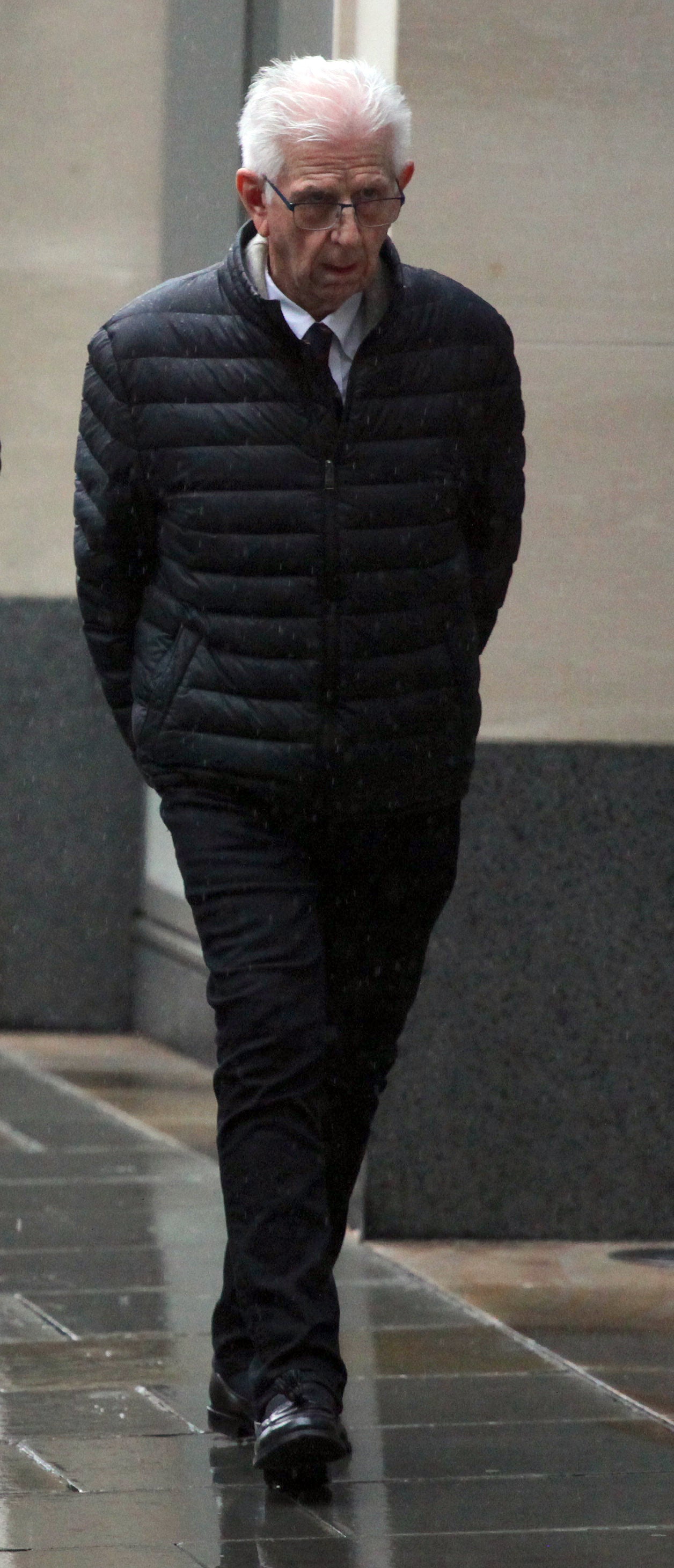
The case returned to the county court last year, when the judge made an order that the Hortons pay the Orchards £35,000 in compensation for their trespass over the boundary.
But the Hortons fought on, applying to a High Court judge and losing last year, before two further failed applications in the case this year.
Their barrister, Dr Sandy Joseph, argued that new evidence – comprising a 1958 title document – “suggests a different boundary line” is the true dividing line.
Judge Duddridge had also failed to review all the evidence and gave too little weight to evidence of alleged physical discrepancies on the ground, she claimed.
“This is an elderly gentleman, they’re both retired, they’re both on state pensions,” said Dr Joseph. “It is very obvious they are trying very hard to right a wrong.”
But for the Orchards, barrister Carl Brewin said the Hortons only had themselves to blame for the massive court bill which they have been left facing.

“They are in the position they are because they have contested every application, contested the claim and they have lost,” he told the judge.
“Ultimately, the Hortons cannot get over the fact that they lost.”
Mr Justice Miles rejected their application to appeal, telling the couple that they had to give up and accept the ruling on where the boundary lies.
“I don’t consider there is any proper basis for the introduction of the new evidence, which all concerns a challenge to the original decision of July 2023,” he said.
“This appeal was doomed in the sense it never had any realistic prospect of succeeding because it is in reality an attempt to have another go at appealing the decision of July 2023.
“I therefore certify that the application was totally without merit.”
He continued: “In her submissions, counsel for the appellants said that the appellants have been seeking to right a wrong.
“I think it’s important to say that there is a principle of finality in litigation.
“They were parties to legal proceedings, in which they were able to put forward all of their arguments.
“They lost those proceedings and they must abide by the order of the court.
“The position of the boundary has been set by the order of July 2023 and, although they don’t appear to be prepared to accept it, they must do so and must live with that order.”
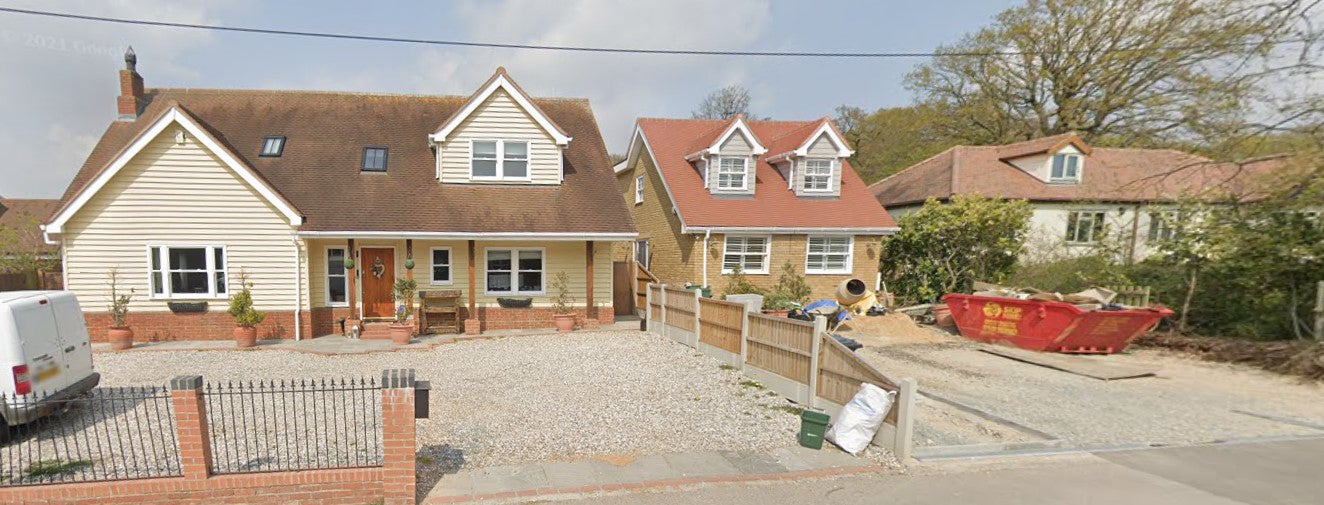
The total bill which the Hortons face for their failed case is well over £200,000, before even taking into account the money shelled out on their own lawyers.
“Counsel for the appellants said that they will not be able to pay, but inability to pay isn’t a reason why a costs order should not be made,” said Mr Justice Miles.
“This case has a very long history. The appellants have shown that they are simply not prepared to accept the rulings of the court and the application for permission to appeal is really an attempt to reopen the original order.”
He added: “It’s doubtless a very heavy burden for any litigant in the position of the appellants to have to meet orders for costs in a case of this kind, but that’s the consequences of losing legal proceedings.
“They must face up to the fact that the boundary is where the judge has ordered. There must be an end to litigation.”
